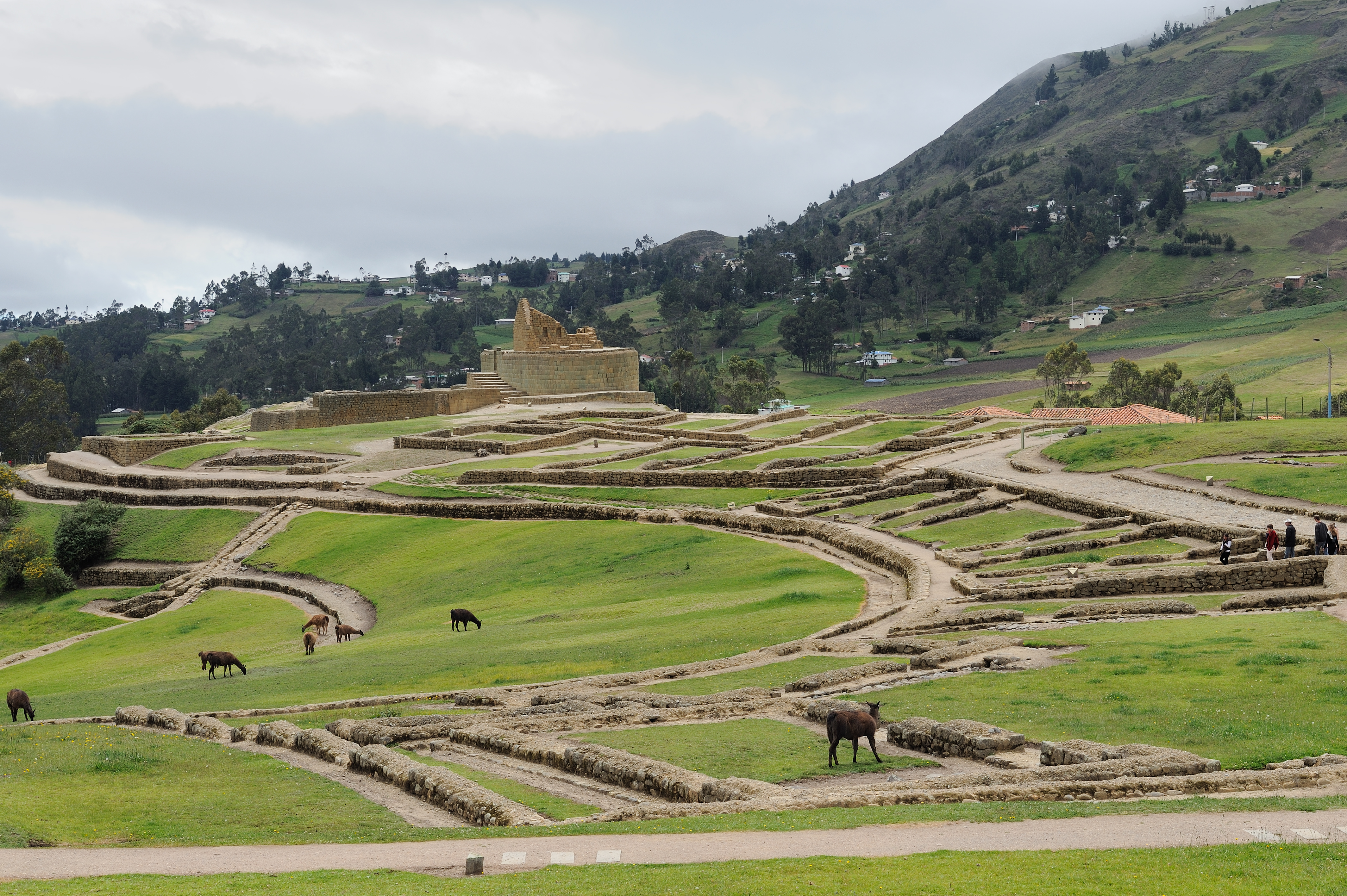Ingapirca on:
[Wikipedia]
[Google]
[Amazon]
 Ingapirca ( Kichwa: ''Inka Pirka'', "Inca wall") is a town in
Ingapirca ( Kichwa: ''Inka Pirka'', "Inca wall") is a town in

Official website of the archaeological complex
{{Authority control Populated places in Cañar Province Archaeological sites in Ecuador Buildings and structures in Cañar Province Tourist attractions in Cañar Province Inca
 Ingapirca ( Kichwa: ''Inka Pirka'', "Inca wall") is a town in
Ingapirca ( Kichwa: ''Inka Pirka'', "Inca wall") is a town in Cañar Province
Cañar () is a Provinces of Ecuador, province in Ecuador. The capital is Azogues. At the time of census 2010 the province had a population of 225,184. It contains the 16th-century ruins of Ingapirca, the best-known Inca settlement in Ecuador an ...
, Ecuador
Ecuador ( ; ; Quechua: ''Ikwayur''; Shuar: ''Ecuador'' or ''Ekuatur''), officially the Republic of Ecuador ( es, República del Ecuador, which literally translates as "Republic of the Equator"; Quechua: ''Ikwadur Ripuwlika''; Shuar: ''Eku ...
, and the name of the older Inca
The Inca Empire (also known as the Incan Empire and the Inka Empire), called ''Tawantinsuyu'' by its subjects, (Quechua for the "Realm of the Four Parts", "four parts together" ) was the largest empire in pre-Columbian America. The admin ...
ruins and archeological site nearby.
These are the largest known Inca ruins in Ecuador. The most significant building is the Temple of the Sun, an elliptically shaped building constructed around a large rock.
History
This area had long been settled by theCañari
The Cañari (in Kichwa: Kañari) are an indigenous ethnic group traditionally inhabiting the territory of the modern provinces of Azuay and Cañar in Ecuador. They are descended from the independent pre-Columbian tribal confederation of the s ...
indigenous people, who called it ''Hatun Cañar.'' As the Inca Empire expanded into southern Ecuador, the Inca Túpac Yupanqui
Topa Inca Yupanqui or Túpac Inca Yupanqui ( qu, 'Tupaq Inka Yupanki'), translated as "noble Inca accountant," (c. 1441–c. 1493) was the tenth Sapa Inca (1471–93) of the Inca Empire, fifth of the Hanan dynasty. His father was Pachacuti, and h ...
encountered the Cañari "Hatun Cañar" tribe. He had difficulties in conquering them. He used different political strategies, marrying the Cañari princess and improving the Cañari city of ''Guapondelig,'' calling it Tumebamba or Pumapungo (present-day Cuenca).
The Inca and Cañari decided to settle their differences and live together peacefully. The astronomical observatory was built under Inca Huayna Capac. The Inca renamed the city as Ingapirca and kept most of their distinctive customs separately, as the Cañari did theirs. Although the Inca were more numerous, they did not demand that the Cañari give up their autonomy.
The castle complex is of Cañari-Inca origin. Its purpose is uncertain. The complex was used as a fortress and storehouse from which to resupply Inca troops en route to northern Ecuador. At Ingapirca they also developed a complex underground aqueduct system to provide water to the entire compound.
The Temple of the Sun is the most significant building whose partial ruins survive at the archeological site. It is constructed in the Inca way without mortar, as are most of the structures in the complex. The stones were carefully chiseled and fashioned to fit together perfectly. It was positioned in keeping with their beliefs and knowledge of the cosmos. Researchers have learned by observation that the Temple of the Sun was positioned so that on the solstice
A solstice is an event that occurs when the Sun appears to reach its most northerly or southerly excursion relative to the celestial equator on the celestial sphere. Two solstices occur annually, around June 21 and December 21. In many countr ...
s, at exactly the right time of day, sunlight would fall through the center of the doorway of the small chamber at the top of the temple. Most of this chamber has fallen down.
The people had numerous ritual celebrations at the complex. They prepared gallons of a local fermented drink to consume in the rituals of these festivals. As sun and moon worshipers, they tried to be as close to their gods as possible, and built their monuments high in the mountains.
The weather changes rapidly, within minutes, ranging from calm and sunny one minute and rainy, windy, and cold another minute. This climate volatility is typical year round. The people felt strongly that this was the place where the gods had led them, regardless of the climate.
Tourism
To visit Ingapirca, travelers can take a day tour from the city of Cuenca. They may also spend the night in the towns of El Tambo or Cañar and travel the next day to the site.Map

See also
*Lost Pyramid of Puñay
Lost may refer to getting lost, or to:
Geography
*Lost, Aberdeenshire, a hamlet in Scotland
*Lake Okeechobee Scenic Trail, or LOST, a hiking and cycling trail in Florida, US
History
*Abbreviation of lost work, any work which is known to have be ...
References
External links
*Official website of the archaeological complex
{{Authority control Populated places in Cañar Province Archaeological sites in Ecuador Buildings and structures in Cañar Province Tourist attractions in Cañar Province Inca